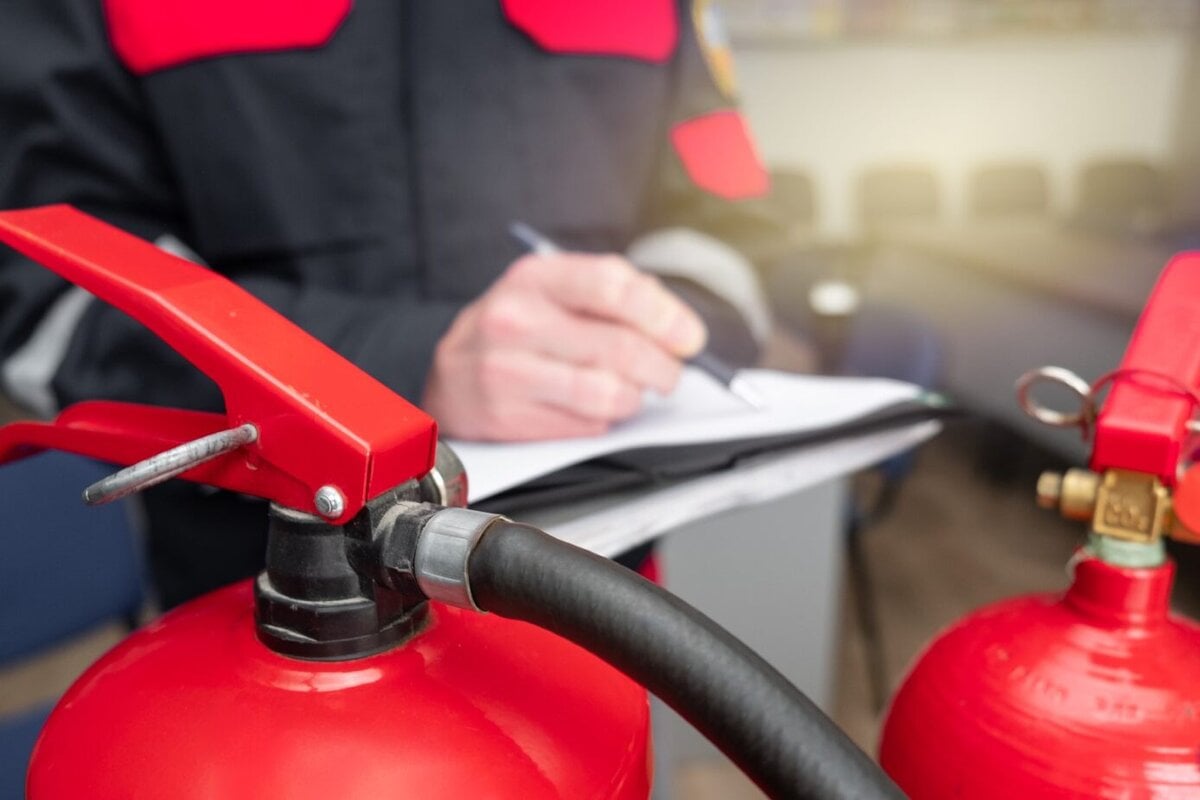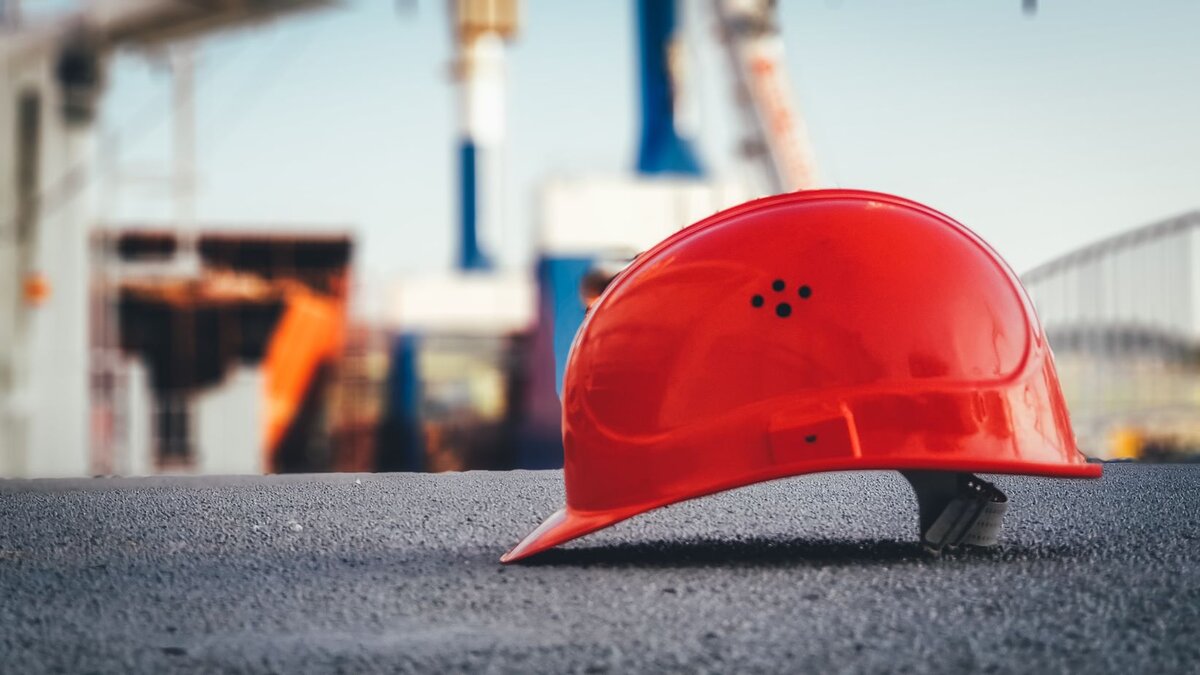Housekeeping is an important factor to ensure the safety of employees in an organization. Good housekeeping can help companies reduce workplace hazards and provide a safe and secure environment for employees.
But in a work setting, it means much more. Housekeeping is crucial to safe workplaces. It can help prevent injuries and improve productivity and morale. It is also key to getting through your health and safety inspections with few identified hazards and necessary corrective actions.
The practice extends from traditional offices to industrial workplaces, including factories, warehouses and manufacturing plants that present special challenges such as hazardous materials, combustible dust and other flammables. Experts agree that all workplace safety programs should incorporate housekeeping, and every employee should play a part.
Workplace housekeeping is closely tied to your organization's safety culture. Read more in our article 5 Steps to Change the Safety Culture in your Organization.
There are many important things that you need to know about good housekeeping in the workplace. Here are 11 tips for effective housekeeping to ensure worker safety.
1. Prevent slips, trips and falls
All workplaces should be “kept clean and orderly and in a sanitary condition.” The rule includes passageways, storerooms and service rooms. Floors should be clean and dry. Drainage should be present where “wet processes are used.”
Employers should select adequate flooring e.g., cement, ceramic tile or another material, as different types of flooring hold up better under certain conditions.
To help prevent slip, trip, and fall incidents, HSE.gov.uk recommends the following:
- If you have an accident or a near miss, make sure you report it to your employer promptly. They can use this information to prevent future accidents.
- If you see a spillage, clean it up or make arrangements for it to be cleaned.
- Report any damaged floors or mats.
- Play your part and keep the workplace tidy.
- If you see items on the floor where someone could trip over them, remove them or arrange for them to be removed or for the situation to be made safe.
- If you are given PPE, wear it and look after it. Report any faults or damage to your employer and make arrangements for a replacement.
- Tell your employer about any work situation that you think is dangerous, or if you notice that something has gone wrong with their health and safety arrangements.
2. Eliminate fire hazards
Employees are responsible for keeping unnecessary combustible materials from accumulating in the work area. Combustible waste should be stored in covered metal receptacles and disposed of in a safe manner on a daily basis.
To help mitigate or eliminate the risk of fire hazards, HSE.gov.uk recommends the following:
- Carry out a fire safety risk assessment.
- Keep sources of ignition and flammable substances apart.
- Avoid accidental fires. For instance, anchoring heaters to ensure they can't be knocked over.
- Ensure good housekeeping practices in the workplace at all times, like avoiding build-up of rubbish that could burn.
- Consider how to detect fires and how to warn people quickly if they start, like installing smoke alarms and fire alarms or bells.
- Have the correct fire-fighting equipment for putting a fire out quickly.
- Keep fire exits and escape routes clearly marked and unobstructed at all times.
- Ensure your workers receive appropriate training on procedures they need to follow, including fire drills.
- Review and update your risk assessment regularly.

3. Control dust
There are three main types of dust:
- Silica dust – created when working on silica containing materials like concrete, mortar and sandstone (also known as respirable crystalline silica or RCS);
- Wood dust – created when working on softwood, hardwood and wood-based products like MDF and plywood;
- Lower toxicity dusts – created when working on materials containing very little or no silica. The most common include gypsum (e.g. in plasterboard), limestone, marble and dolomite.
Stop or reduce the dust
Before work starts, look at ways of stopping or reducing the amount of dust the processes may generate. Use different materials, less powerful tools or other work methods to prevent dust from spreading. For example, you could use:
- The right size of building materials so less cutting or preparation is needed;
- Silica-free abrasives to reduce the risks when blasting;
- A less powerful tool – e.g. a block splitter instead of a cut-off saw;
- A different method of work altogether – e.g. a direct fastening system
Even if you stop some dust this way, you may want to look at other processes that could still produce high dust levels.
In these cases, the most important action is to stop the dust getting into the air. There are two main ways of doing this:
- Water – water damps down dust clouds. However, it needs to be used correctly. This means enough water supplied at the right levels for the whole time that the work is being done. Just wetting the material beforehand does not work.
- On-tool extraction – removes dust as it is being produced. It is a type of local exhaust ventilation (LEV) system that connects directly onto the tool. This ‘system’ consists of several individual parts – the tool, capturing hood, extraction unit and tubing. Use an extraction unit to the correct specification (i.e. H (High) M (Medium) or L (Low) Class filter unit). Don’t just use a general commercial vacuum.
4. Avoid tracking materials
Work-area mats – which can be cloth or sticky-topped – should be kept clean and maintained. This helps prevent the spread of hazardous materials to other work areas. Additionally, separate cleaning protocols may be needed for different areas to prevent cross-contamination. If the materials are toxic, industrial hygiene testing, uniforms and showering facilities might be needed. Employees who work with toxic materials should not wear their work clothes home.
It's important to ensure that hazardous materials are not tracked and brought into the general workplace, which could risk exposure to other employees as well. As a result, organizations are responsible for making sure that materials aren't tracked into different areas within the workplace.
5. Prevent falling objects
Protections such as a toe board, toe rail, or a net can help prevent objects from falling and hitting workers or equipment. Other tips include stacking boxes and materials straight up and down to keep them from falling.
Place heavy objects on lower shelves and keep equipment away from the edges of desks and tables. Also, refrain from stacking objects in areas where workers walk, including aisles. Keep the layout in mind so workers are not exposed to hazards as they walk through areas.
Falling objects can lead to major injuries. It's also important to carefully observe whether items are precariously balanced on the shelves or not, as there's always a risk that they might fall. Ideally, workers should be tasked with the responsibility of double-checking items once they've been placed on the shelf to ensure they aren't at a risk of falling.
6. Declutter
A cluttered workplace can lead to ergonomics issues and possible injuries because workers have less space to move. The best way to maintain good housekeeping in the workplace is to keep the aisles, stairways, emergency exits, and electrical panels as free of clutter as possible.
For instance, trash receptacles should be emptied out before they overflow and it's imperative for organizations to purge any untidy areas in the workplace. These may seem like minor issues, but they can quickly escalate and can ladder up into other concerns.
It's important for organizations to make sure that they set up a cadence to regularly clean out trash receptacles and keep the workplace as organized and as clean as possible.
7. Store materials properly
You must ensure chemicals and dangerous substances are stored and handled in a way that minimizes their risks and limits people’s exposure to them.
You can control risks by:
- storing chemicals according to the manufacturer’s instructions
- keeping the minimum quantity of hazardous substances necessary
- storing incompatible substances separately
- taking steps to prevent release or leakage of dangerous substances
- keeping a spill kit near storage areas and ensuring staff are trained in what to do in the event of a spill
- cleaning up any leaks or spills that occur immediately
- using appropriate precautions when handling substances – for example, wearing protective clothing or ensuring adequate ventilation
- ensuring employees who store and handle dangerous substances are properly trained
- checking containers used for short-term storage are properly labelled
If you store chemicals or dangerous substances that could create a fire or explosion, you must ensure that flammable substances are correctly stored in suitable containers and are not stored near a source of ignition such as a heater.
You should also:
- place stores of liquid above ground where they’re unlikely to be damaged, e.g. away from traffic routes
- avoid overfilling containers
- supervise deliveries
- maintain gauges, valves, and pipework
- monitor oil use – unexpectedly high use may indicate a leak
- have procedures for dealing with emergency leakages
- use a secondary containment system such as a drip tray or bund (a storage area designed to prevent liquids escaping)
8. Use and inspect personal protective equipment and tools
Wear basic PPE – such as closed-toe shoes and safety glasses – while performing housekeeping. Determine what type of PPE to wear based on the potential risks. Regularly inspect, clean and fix tools. Remove any damaged tools from the work area.
PPE should also be inspected on a regular basis and any damaged articles should be removed and replaced. Companies also need to set up a regular maintenance schedule to identify any damaged tools and inspect machinery, and if necessary, replace them.

9. Determine frequency
All workers should participate in housekeeping, especially in terms of keeping their own work areas tidy, reporting safety hazards and cleaning up spills, if possible.
Before the end of a shift, workers should inspect and clean their workspaces and remove unused materials. This dedication can reduce time spent cleaning later.
The amount of debris or contaminants the workplace releases can help determine the frequency of housekeeping. A company should have a mixture of deep cleaning and more frequent, lighter cleaning that involves sweeping and responding to spills.
10. Create written rules
Written protocols could specify which cleaners, tools and methods should be used, as they are then formal and defined.
It's important for organizations to write everything and then communicate these rules to the employees, as it ensures that all employees are held to a specific standard. More importantly, it ensures that workers will know exactly what they have to do and follow a defined set of rules.
11. Think long-term
Housekeeping should be more than a one-time initiative – it should continue through monitoring and auditing. Keep records, maintain a regular walk-through inspection schedule, report hazards andrain employees to help sustain housekeeping. Set goals and expectations, and base auditing on those goals.
Improve workplace housekeeping with EcoOnline
EcoOnline makes it easy for organizations to improve workplace housekeeping by giving them a centralized reporting tool that they can use to easily track any hazards and work done. Companies can use it to create checklists and prepare written rules that they can share with all relevant employees.
